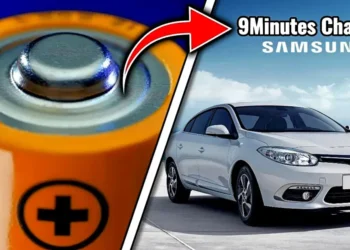
Unveiled at the MWC 2024 (Mobile World Congress) in Barcelona, Spain, “Project Crystal,” also referred to as the ThinkBook Transparent Display Laptop isn’t completely see-through, However, this sizable ThinkBook does come with a transparent screen and a keyboard made of transparent or glass material on top.
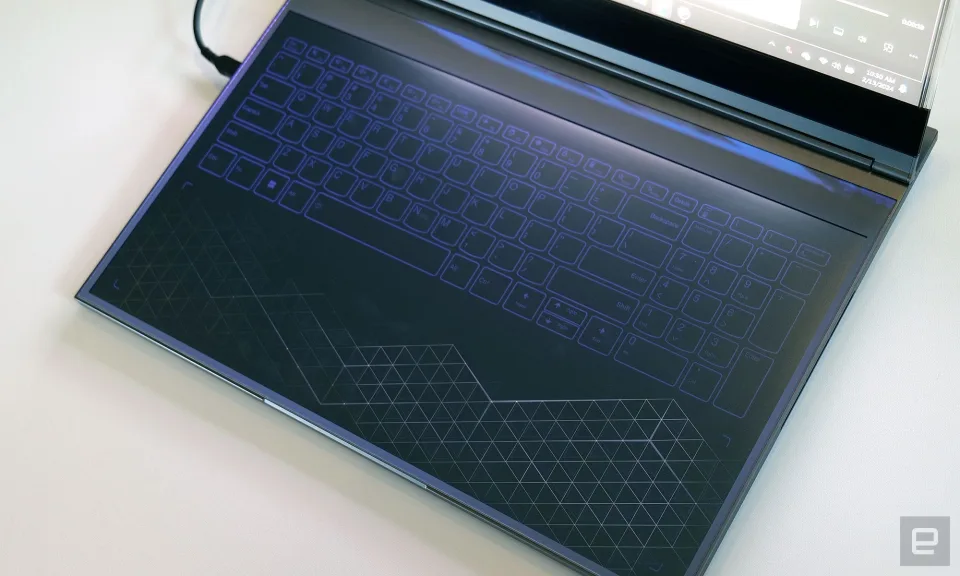
While it’s just a concept and won’t be released as an actual product, it gives us a sneak peek at how transparent technology will appear on laptops.
It could be handy in places like doctor’s offices or hotel desks, where you could flip the display with software for easy sharing, enabling others on the opposite side to view it while receiving detailed explanations.
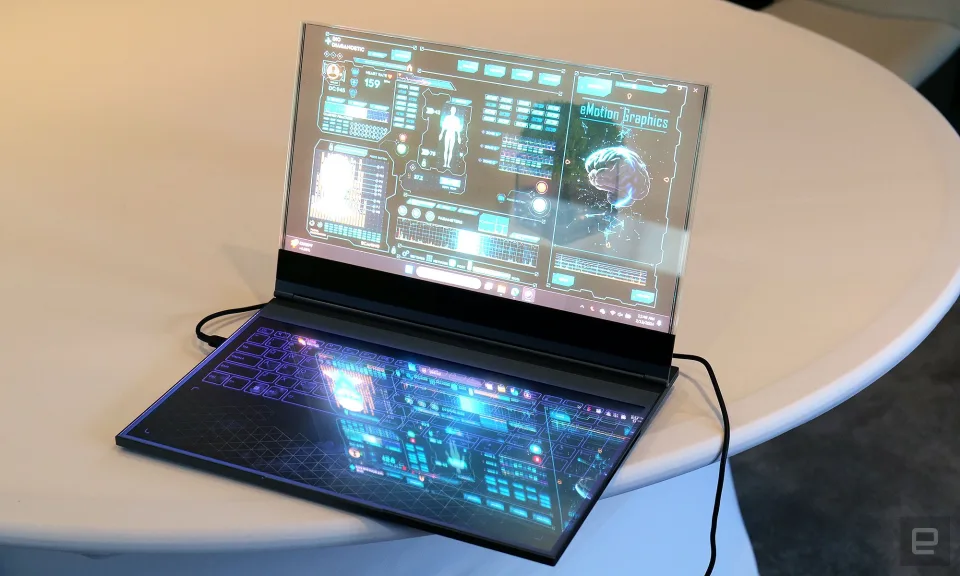
This large Windows 11 device features a 17.3-inch Micro-LED transparent display with a borderless screen protected by Gorilla Glass on both sides, though the glass edges are slightly sharp. Lenovo also displayed a transparent digital keyboard as part of this concept.
However, the inner components of the laptop are not visible. Instead, there’s a large touchscreen keyboard at the bottom.
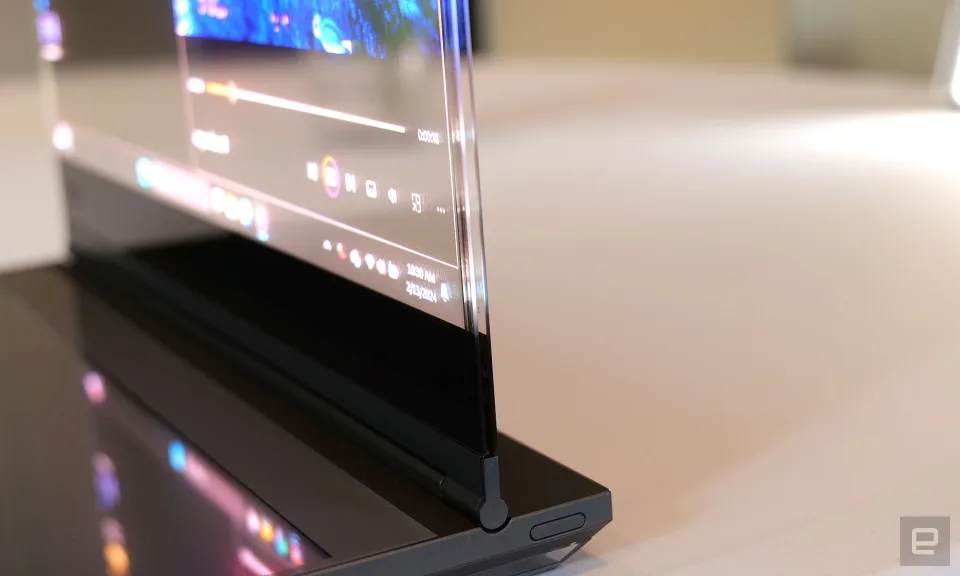
Lenovo added a camera to the back of the laptop to analyze the surroundings. Using Intel AI, it can display augmented reality on a transparent screen, merging virtual and real worlds.
For example, if there are flowers behind the screen, it could show an AR butterfly landing on them.
Lenovo believes adding the rear camera could bring new uses for augmented reality, like object recognition similar to Google Lens.
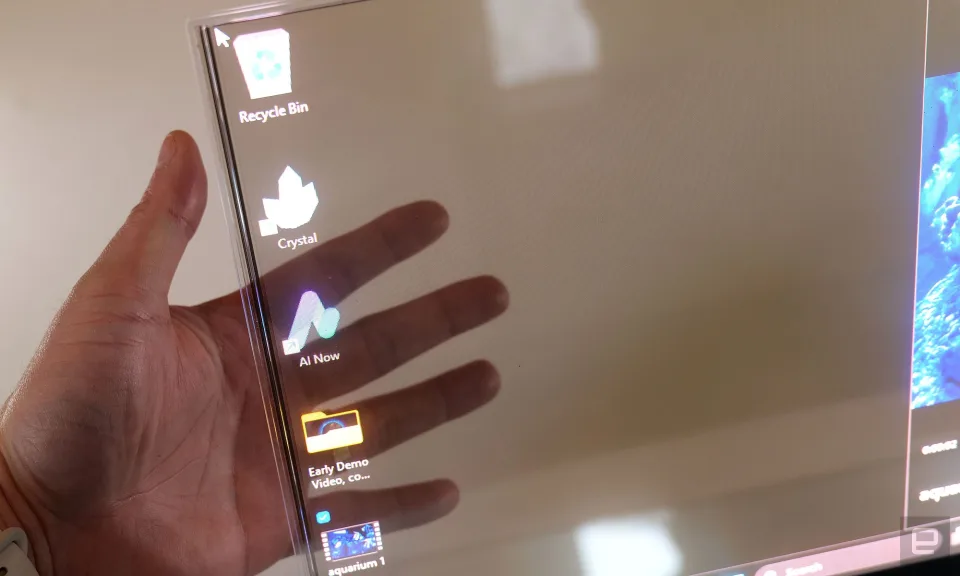
Watching videos with a transparent background is a bit challenging because the colors and movement aren’t as noticeable. However, you can still watch and understand what’s happening without too much difficulty.
Since the screen is transparent, what’s behind it, such as a wall or window, impacts visibility, although not as much as you might expect. A dark background can enhance the visibility of light images and text, while a bright background from a window or other light source can make it more challenging to see.
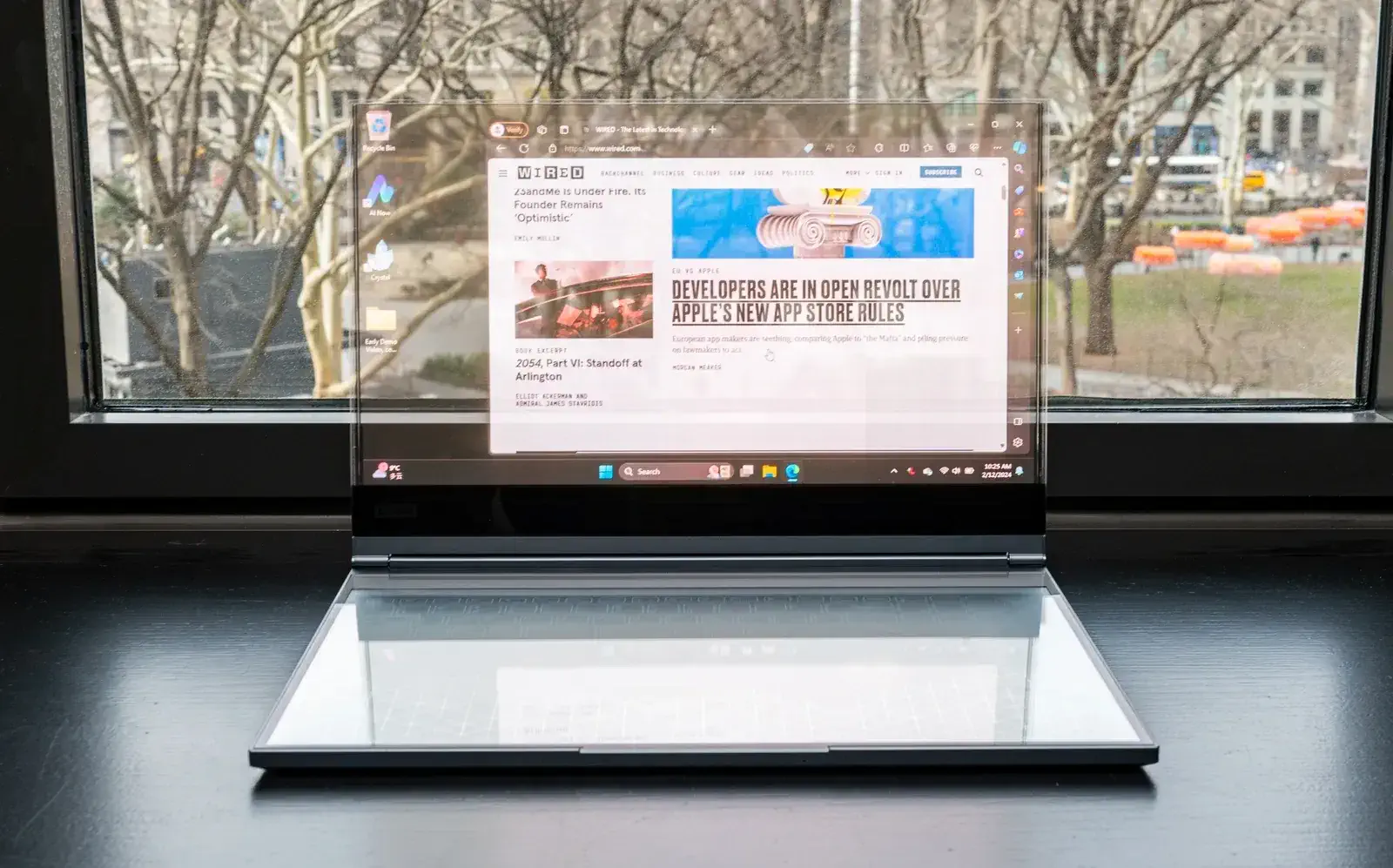
The brightness can reach up to 1,000 nits nominally, with peaks potentially hitting 3,000 nits, making it brighter than the new Galaxy series, according to Lenovo.
Despite being composed of multiple layers, the panel is remarkably thin, blurring the boundary between digital and analog worlds. Lenovo is also considering adding a contrast layer, enabling it to switch to a traditional opaque display with the press of a button.
Lenovo says it’ll be a while before a transparent laptop like Project Crystal is available for sale. It’s uncertain if this trend, like transparent TVs, will catch on.
Even if it’s available to the public the Lenovo clear-screen laptop raises concerns about privacy due to its transparent display. In environments like homes or offices, where multiple people may be present, the see-through screen makes it challenging to keep personal or sensitive information private.
This can lead to discomfort and potential security risks as others nearby may inadvertently see what’s displayed on the screen.



